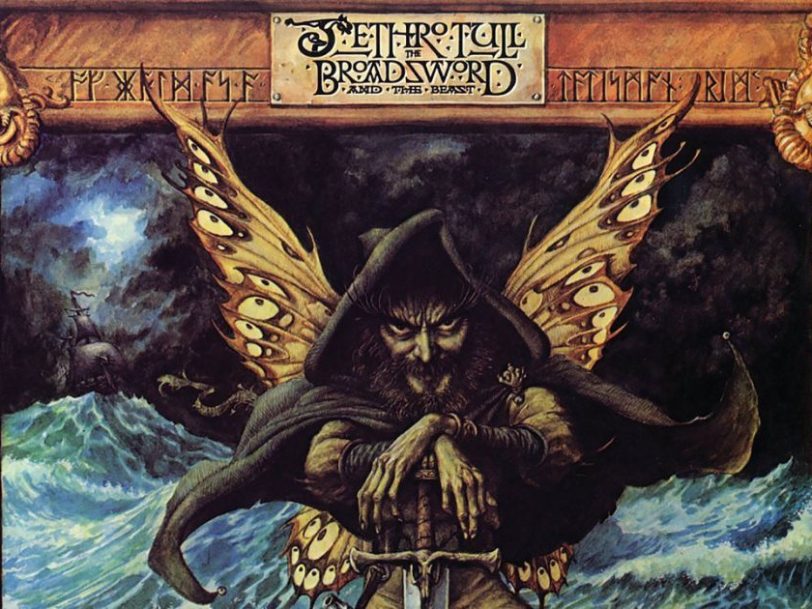Transporting listeners to a far-off world of Viking invasions, chivalrous heroes and medieval musings, Jethro Tull’s 14th studio album, The Broadsword And The Beast, marked a bold sonic departure for the iconic prog-rock band. Merging the raw power of hard rock with 80s synths and electronic soundscapes, The Broadsword And The Beast is a daring exploration of Jethro Tull’s versatility and artistic vision. Here’s the full story behind the group’s epic sword-wielding saga…
Listen to ‘The Broadsword And The Beast’ here.
The backstory: “We tried to recapture a romantic element of fantasy without making it too quaint”
By the early 80s, Jethro Tull frontman Ian Anderson was living on the Isle Of Skye, not far from the west coast of Scotland. At a remove from the stresses of urban life, the songwriter would often embark upon scenic walks across Skye’s rugged and picturesque terrains. As he found himself surrounded by stunning landscapes of rolling hills, rocky cliffs and tranquil lochs, the island’s mystical atmosphere and rich Celtic history weighed heavy on his mind, and he began to reflect upon Scotland’s past.
“In times gone by, the Viking longships came up the sea lochs of Scotland to pillage and plunder and generally have their wicked way with the locals,” Anderson said in an interview with Classic Rock magazine. Inspired by historical accounts of legions of bloodthirsty warriors besieging the Scottish waterways as he stood on a headland, Anderson began to envision what would become The Broadsword And The Beast, his lyrics emerging as windswept musings on the early medieval period.
Envisioning a back-to-basics rock album of sorts, as he put pen to paper Anderson sought to combine the poetic imagery of the Dark Ages with contemporary lyrical concerns. By this point in Jethro Tull’s career, the group had already flirted with Elizabethan lore (Minstrel In The Gallery) and pastoral whimsy (Songs From The Wood, Heavy Horses), but this time, Anderson wanted to cast his gaze further back in time, fusing the heroic thrust of medieval fantasy sagas with the stark realities of the present day.
“We tried to recapture a romantic element of fantasy that had been missing for an album or two without making it too quaint or pixie-like,” Anderson explained to Trouser Press. This would prove to be an opportunity for Jethro Tull to move away from folk-rock altogether and reassert themselves as hard-rock stalwarts, updating their sound with 80s synths and electronic soundscapes. As Anderson put it to Prog magazine: “You take a direction, adapt a style to suit your palette and move on.”
The recording: “It’s more of a rock album, it’s a lot of straight-ahead 4/4 stuff”
Unlike the fleet of Vikings invading the Scottish coast, however, not everything was smooth sailing on the Jethro Tull longship. Though guitarist Martin Barre and bassist Dave Pegg were up for braving the waves, there were stormy seas ahead. Since the release of the band’s previous album, 1980’s A, keyboardists John Evan and Dee Palmer had parted ways with the crew, as had drummer Barrie “Barriemore” Barlow.
After enlisting Gerry Conway to take Barlow’s place, Jethro Tull finally headed to Maison Rouge Studios, in Fulham, London, and recording sessions for The Broadsword And The Beast got underway. Before long, however, it became clear to Anderson that something – or, perhaps, someone – was missing. To remedy this, Peter-John Vettese, a 25-year-old keyboardist who had cut his teeth in a jazz-fusion group called Solaris, was brought aboard midway through the sessions, and he immediately changed the band’s direction of travel.




